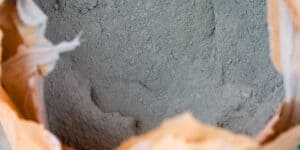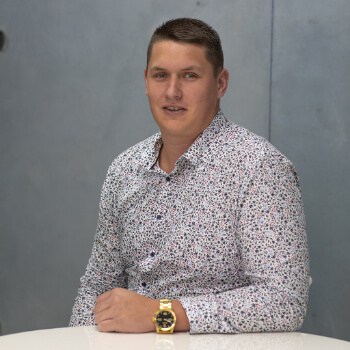As MARKHAM launches the new CIVIL-TECT™ system, we ask Doug for some background information. What are the issues faced in concrete remediation, and what is the best way to arrest concrete deterioration? Doug emphasises the need to act early; and to approach the structure holistically, not superficially, to prevent major repair bills. Then he summarizes the key benefits of the CIVIL-TECT™ system for all parties – the engineers, maintenance teams, and asset owners.
CIVIL-TECT System

Invisible Strength
CIVIL-TECT System
/
RSS Feed
CIVIL-TECT System
CIVIL-TECT Information markhamglobal.com/markham-videos/civil-tect-concrete-infrastructure-protection-system
MARKHAM Durability Treatments markhamglobal.com/markham-videos/concrete-durability-treatments-info
GWT Test germann.org/products-by-application/water-penetrability-2/gwt
View the Transcript
BRENDAN: Well, g’day, everybody. Welcome to another episode of MARKHAM’s Invisible Strength podcast series. Today we have onboard Doug Hamlin, who is our in-house research and development technician, amongst his other official titles. Doug, welcome aboard. Tell us a bit about your background and career history.
DOUG: Thanks, Brendan. Yes, it’s good to be involved in this podcast today. It’s a topic I’m excited about. Briefly, I’ve been with MARKHAM for 11½ years, I think it is now, starting from doing some work on-site and a bit of project management and marketing. Mostly in the consultant area, so working with specifiers, engineers, and architects. What I’m doing currently is with engineers and asset owners, looking at ways we can extend the service life of infrastructure projects. As you mentioned, also involved in the technical side of MARKHAM, a little bit of R&D work, that type of thing.
BRENDAN: Very good, thank you. So today’s podcast, just as a spoiler alert, it’s about the CIVIL-TECT system. But we’ll get to that in due course. I just wanted to talk a little bit about the background leading up to it and how we’ve come to this point and released this new arrangement. Talking about the experience that you mentioned, you particularly specialize in remediation of ageing concrete structures, is that correct?
DOUG: Yes, that’s right. Obviously, a large part of our business is with general construction, so the likes of new retail, high-rise office buildings, basements, car park structures, that type of thing, and a large part of the team do focus on that. But myself, I focus on the remediation, particularly in the infrastructure market or industry. It is still a very core part of what we do at MARKHAM. It’s something that the founders have been passionate about right from when they started MARKHAM, I think it’d be fair to say.
BRENDAN: Yes, that’s good. I remember when I first started with MARKHAM myself in 2014, it was a very significant part of what we were doing even then. What would you say are the main issues you see with concrete infrastructure in the real world?
DOUG: Yes, that’s a good question. I guess predominantly, we see a lot of structures that just get left. There might be some slight indications of problems with the structure, might be just some minor cracking, that type of thing. It’s not major, so it just gets left and left, and nothing’s done. Whereas, it’s really important to get on to that early on. It only goes one way: concrete deterioration, and that is quite exponential once it does start to go. So I think that delay before something’s done about it.
Also, when there are major repairs, say, a wharf structure, often what happens is that the major repairs are done, like the obvious spalls, that type of thing. But we kind of forget that the rest of the structure is actually not in that much better condition, and we don’t do anything about it. Whereas, it’s really the perfect opportunity to protect that existing concrete or that ‘parent’ concrete, as well as the repairs at that point, so that it doesn’t happen again.
BRENDAN: So in that context, would you say there’s a danger of getting caught in a spiral of repeated maintenance bills without dealing with underlying causes?
DOUG: Yes, 100%. Taking that same example of where we’re talking about some obvious spalls, or there might be some corrosion staining that gets fixed up, if that’s just patched up and we move on, that same process – I’d imagine the parent concrete is still not in that much better condition than where the repair was. But what also happens is that because you’re introducing a new concrete, it actually accelerates the corrosion process to the steel beside where the repair was, and then you get another breakout beside that repair. We’ve literally seen this, and I can show you some photos, of where there’s a repair and there’s another repair beside it and another one beside that. So it becomes a thing that has to be fixed up every 5 to 10 years on some structures, not every structure obviously. But yes, it just spirals, and it goes on and on. It’s not cheap to do concrete repair. I mean, access alone in some of those structures is sometimes either half the cost, and then they have to do that every 10 years. So we definitely can work smarter, if that makes sense.
BRENDAN: Very good. So that raises the question, what is the alternative? Tell us about working smarter.
DOUG: Yes. I’ve mentioned protecting the parent concrete a couple of times already. If I just go a little bit deeper on that, basically in concrete deterioration, moisture movement or moisture migration through the concrete is the root cause behind all the problems associated with concrete. If we just look at steel corrosion, since we’ve been talking about that today, if there’s no moisture, for one, that’s one of the three key ingredients for corrosion. But also, if there’s no moisture migration, it can’t take contaminants like chlorides through to the concrete reinforcing steel, and start that spall or that rusting and subsequent spalling process. So ideally, what we can do is arrest that mechanism – or that moisture movement mechanism, if you like – and arrest that deterioration cycle.
Now, what we’ve worked with here at MARKHAM, to date, I hand on heart say, it’s the most effective way to deal with concrete deterioration, is to utilize a hydrogel system to essentially lock that moisture up, so it can’t move around and can’t let those contaminants through the concrete. There’s a few other ways of achieving that and trying to address corrosion. But in terms of a simple method and a cost-effective method to protect concrete and extend service life, the hydrogel treatment of concrete is a clear winner, in my view.
BRENDAN: Very good. I think we were talking about the fact that we’ve repackaged our approaches to those issues.
DOUG: Yes, obviously we’ve been doing these hydrogel systems for years. But obviously, a lot of the time, it’s not just like a one-stop product, it’s always part of a system. So what we’ve done is repackaged these what might be three separate products, and come up with a multifaceted approach to make sure we get the very best when we are in there protecting concrete. That’s what we’ve called the CIVIL-TECT systems.
BRENDAN: That’s good. CIVIL-TECT. So can you walk us through that, what does that actually include?
DOUG: Yes, that’s a good point. So first of all, if I talk about the most common hydrogel that we’re known for in the infrastructure space, it’s the AQURON 7000 system. That’s for existing structures, and oftentimes, it can be used with a surface type coating as well, so you get the internal moisture protection and you get the external. That’s one of the CIVIL-TECT packages there, where you get a hydrogel internally and then something like the CONQOR SC2 on the outside, to provide that moisture repellent at the surface. So you’re getting the best of both worlds in terms of protection.
Another area is into new structures. So where we get involved with the concrete mix design and utilize an admixture; sometimes it’s just an admixture, sometimes it’s an admixture and a curing treatment afterwards. It all comes down to what the project needs really, what the environment that it’s in, and what’s best for that structure. Obviously, there’s budgets and funding we need to be aware of, but also, we’re very aware of the long-term cost and strive to find the best balance there.
BRENDAN: I guess that’s what this is about, isn’t it? We’re talking about the repeated maintenance and long-term costs. So perhaps you could tell us, if any of our listeners are thinking about it, what does it mean for our customers? What’s the benefits to the asset owners and repairing teams, or maintenance and management teams?
DOUG: Yes, definitely. I guess the first thing is, it’s a lot easier to select and specify one system, from an engineer’s point of view, rather than having to go and research and specify individual products to do… Because oftentimes… I haven’t really been involved in a project where it’s just one product that’s used to protect the concrete structure, there’s always multiple. So like I said, being able to specify one particular system, and you know that that’s going to be the correct specification for that structure, and have all that – how they’re going to be used, and what product is right for that situation – all in that one specification, that’s all done for you. So MARKHAM has done that work in terms of the specification.
I guess the most important thing is it gives the structure a holistic approach. So it’s looking at not just one problem of the structure. It might be that it’s moisture movement, but then also, it might be, for example, a structure that’s got ASR. We want to do everything we can to stop any moisture getting into it, even at the surface level. So we might use an internal hydrogel plus the external water repellent. And that, from a structure point of view and looking at the actual issue, is a far better approach than just a one-stop-shop there, or one product.
I guess the last point there is, we can work with you, with the CIVIL-TECT system, right through the process, and come up with as a solution that fits with client budgets and funding, that type of thing, and fits with the actual issues on that structure. So I’ve mentioned a couple of scenarios there. Then also, things like supply of product, whether we actually supply and install the product onsite, or whether it’s a supervised application where we receive the QA documents and set them up with standard operating procedures and have them filled out by TPs onsite, that kind of thing.
So we basically take control of that whole process. So you’re not having to deal with multiple people, you can be sure that MARKHAM is going to make sure that that specification actually ends up on that structure. If there is any issues, you can be sure we’re going to come back and discuss those through with you, as an engineer or a client or an asset owner. Obviously, alongside that, we do have our own application team as well, so that they can be available. It just comes down to what’s easier. Oftentimes on a site, there’s already a repair team set up, and it makes much more sense, both logistically and money-wise, to train that team up and have them just carry on and do those works as well.
BRENDAN: That’s fair enough. The point about having one entity to deal with is important, because you do see, at times, conflicts between suppliers and contractors, and it certainly doesn’t benefit anybody at the end of the day. I guess when we move to the question of long-term costs, the first thing that’s going to rise in many people’s minds is the question of warranty. So what warranty comes with the systems, and how long do you expect them to last? I suppose that’s two different questions.
DOUG: Yes. So the first point is, I guess that’s one of the strong points of the CIVIL-TECT system is it always does come with a warranty. That’s not just product, it’s mostly focused on a performance warranty. So how long can we extend the life of that structure, based on its current condition? First of all, in terms of the length of the warranties, if we take an existing structure that’s had some major repairs done, that type of thing, we may be looking at, say, a 15 to 25-year warranty. Generally it’s around that there’d be no moisture migration through to the steel, or it could be something like there’ll be no elevation of chlorides at the reinforcing steel, because obviously no elevation of chlorides means no further corrosion, things like that. It really depends on the structure, both the condition and what it’s exposed to, as to how we choose the warranty for that project. Also, as a customer or as a client, what’s important to you in terms of warranty, we look at that.
But I guess the main point is, it’s very project-specific, and it’s about warranting a result. So rather than just supplying more product if it doesn’t work, it’s actually based around what are we going to do to fix this problem if there is further corrosion? So there’s a very comprehensive warranty.
On new structures, we match the design life of the concrete. So if an engineer has designed the concrete to last 100 years, we give a guarantee or a warranty that our product will keep that concrete; protect it from corrosion for that 100 years as well. Our logic is that if that concrete by itself can last that distance, we’re only ever improving that, and vastly improving it. So we can offer that. Whereas, it’s well known, I don’t have to dwell on it too much, but there’s a lot of warranties out there that are only 10–15 years for new structures. That kind of begs the question of well, what’s going to happen at that 15-year point? Like, why are we even doing this if it’s only lasting that 15-year time period?
I guess, lastly, we’ve touched on it briefly, but how we control the application process, either with the QA – it might be with repair contractors, applicators, or labourers, that type of thing – or whether we do the application ourselves, keeping control of that process is really the key to why we can offer the warranties that we do. So sometimes on a structure, when we are applying hydrogels, you can’t actually see a lot of difference between a treated and an untreated area. So having that record-keeping and the QA, where every litre has gone on a project, where it’s been actually treated on a structure is marked up, is really the key to how we can offer that warranty.
I can think of a few examples off the top of my head, where there’s parts of a structure that we were instructed not to treat, by our main contractor, that type of thing. Many years down the track, they’ve actually had some issues with that, and it’s clear like night and day, obviously what was treated and what wasn’t. But without that clear record-keeping, or clear QA, I should say, we wouldn’t be able to offer that warranty, if that makes sense.
BRENDAN: Yes, it does. That’s very important, too, for reassurance for the customer. A parallel question. Can you tell us about what testing can be done on the structure to confirm the effectiveness of the treatment? You mentioned that the treatment is not visible, you can’t see where it’s been done.
DOUG: Yes, definitely. You’re exactly right, oftentimes you can’t tell any difference before and after treatment. I guess what we need to really think about is the performance of that cover concrete. So if we’re looking at any testing, we need to think about what’s actually going to show what that cover concrete is doing.
There’s a couple of different ways of doing this. The first one is looking at the chloride levels, so the internal chloride levels in concrete. Generally, it’s taken in 5–10 mm increments. So you build a profile of what the chlorine content is, so we can monitor that over 5, 10, 15 years, however long the warranty is for, and see what those levels are doing. In so many structures, we’ve seen that just plateau and stay at that same level of chlorides, at the depth of steel, which is really impressive and really tangible. It’s something that we can physically measure and verify in a lab situation, particularly for marine type structures or coastal structures.
The other tests we can perform is looking at things like the water penetration into concrete. Obviously, permeability is directly linked to the durability of a structure. So the less permeable it is, the more durability you’re going to get, and more longer-term service life. The main way that we measure this is with the GWT method. This is a portable unit that you can bolt on to even the underside of a structure – onto a wharf deck, bridge deck, whatever it may be – and you can measure both the water permeability, and then you can calculate the sorbtivity of the concrete as well from a 15 to 20-minute test on-site. Basically, it forces in water at around about 10 metres head pressure, so it’s often a lot more than a wharf or a bridge structure is going to face. You can see a clear difference before and after you’ve treated with the CIVIL-TECT system. That can be monitored over time, and prove that effectiveness of the treatment.
Another area is around, say, if it’s not so much consumed chlorides but if it’s a carbonation attack, so on a busy highway, that type of thing. You can take concrete cores and use the carbonation indicator spray, and see the depth of carbonation and monitor that over time. So that’s another – I was going to say black and white, but it’s actually purple and grey! – indication of how far that carbonation is actually going into the concrete.
Yes, that’s the three main methods. Probably what’s also important is methods that don’t show as much. So things that use electrical currents, that type of thing. Because it’s a hydrogel, there is moisture held on a gel, it can show that it’s actually worse got worse corrosion potentials once it’s treated. But in actual fact, in real life, there’s no way… Just because the electric current can get through the hydrogel doesn’t mean that the chloride ions are going to get through there, because they physically can’t, if that makes sense.
BRENDAN: That’s interesting, because it does speak to the methods that are out there in the field. Need to know how to read your results as much as anything. Any other general comments you want to make about the new CIVIL-TECT approach?
DOUG: I don’t think so. I guess just what we started this session off with, is the main issue is that we’re not getting on to these problems early enough and we just leave them for another year because they don’t look too bad, and it just gets worse and worse and worse until we’re faced with a major repair contract. I think they talk about the ‘Law of Fives’ in concrete remediation, and if we can get on at the early phases of that damage cycle, the savings are literally in multiples of five, as you go through the deterioration stages. So there’s a clear cost-saving. It is a hard discussion to have with the accounting department when you might be wanting to spend $250,000 on a structure that looks fine and is operating fine, it’s not causing any problems. But if you take it in 10 years’ time, you could be spending $10–15 million, repairing the structure and doing a major repair cycle. Obviously, we’re going to think in years instead of months here, but there is clear evidence that concrete deterioration only gets worse, and the benefit of treating early is really important.
BRENDAN: That’s good. That’s a good clear message, get in there early, a stitch in time saves nine and all that.
DOUG: 100%!
BRENDAN: Wonderful! Well, thank you, Doug. Very much appreciate your time today. Thank you to everybody who’s listening to this segment. As always, you’re welcome to visit our website https://markhamglobal.com/ for more information and ways to get in touch. Stay safe, and don’t miss our next episode!
Want to Contribute?
Feedback on our podcasts? Suggestions for future topics? Looking for more information on topics we’ve discussed? Send us a message – we’ll be in touch within a day or two.
More about MARKHAM
MARKHAM are dedicated to providing innovations for concrete and construction. Focusing on concrete waterproofing solutions, penetrating concrete sealers and durability treatments for concrete.
Podcast Categories
Menu
Latest Episodes

The Electric Vehicle of Cement Making
We’ve talked about this in other places, but cement manufacturing is a real problem child

Eco Choice – People and Planet Focus
Environmental Choice New Zealand has had a makeover – now it’s called Eco Choice Aotearoa.

Starting Good Conversations
Have you seen those colourful Trademutt shirts on site? They’re a conversation starter! This is
invisible strength podcast
The whole MARKHAM team is pleased to present you with our podcast series, INVISIBLE STRENGTH. In this series of interviews, we’ll walk through the science and challenges of concrete durability, what goes wrong in the field – and the advanced methods available to restore and enhance service life to concrete construction.
INVISIBLE STRENGTH reflects a number of factors in concrete construction and durability. When things go wrong, the evidence can become very visible indeed. However, when all is going well, there’s nothing particular to be seen!
MARKHAM’s concrete treatments, too, are invisible once completed – and the result is the long internal, invisible durability of the concrete.
So join us as we explore the unseen world inside concrete – why it matters, and how it can be protected!
Stay Connected
Listen and subscribe to us on your favourite podcast platform, we're always adding new episodes!
Newsletter
Sign up for email updates on the latest collections, campaigns and videos.

